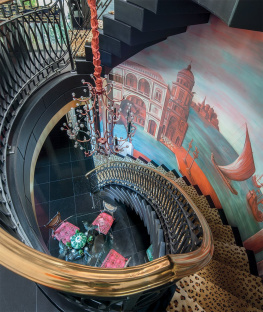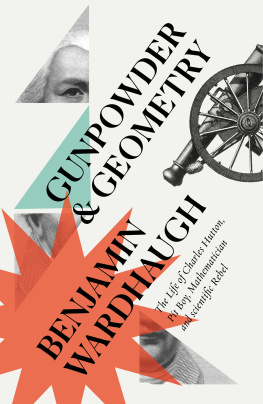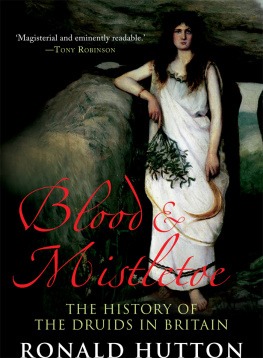RAVENNA A STUDY
BY EDWARD HUTTON
ILLUSTRATED IN COLOUR AND LINE BY HARALD SUND
1913
TO MY FRIEND ARTHUR SYMONS IN AFFECTIONATE HOMAGE
PREFACE
My intention in writing this book has been to demonstrate the unique importance of Ravenna in the history of Italy and of Europe, especially during the Dark Age from the time of Alaric's first descent into the Cisalpine plain to the coming of Charlemagne. That importance, as it seems to me, has been wholly or almost wholly misunderstood, and certainly, as I understand it, has never been explained. In this book, which is offered to the public not without a keen sense of its inadequacy, I have tried to show in as clear a manner as was at my command, what Ravenna really was in the political geography of the empire, and to explain the part that position allowed her to play in the great tragedy of the decline and fall of the Roman administration. If I have succeeded in this I am amply repaid for all the labour the book has cost me.
The principal sources, both ancient and modern, which I have consulted in the preparation of this volume have been cited, but I must here acknowledge the special debt I owe to the late Dr. Hodgkin, to Professor Diehl, to Dr. Corrado Ricci, and to the many contributors to the various Italian Bollettini which I have ransacked.
E.H.
March 1913.
CONTENTS
CHAP.
I. THE GEOGRAPHICAL AND POLITICAL POSITION OF RAVENNA
II. JULIUS CAESAR IN RAVENNA
III. RAVENNA IN THE TIME OF THE EMPIRE
IV. THE RETREAT UPON RAVENNA Honorius and Galla Placidia
V. THE FALL OF THE EMPIRE IN THE WEST
VI. THEODORIC
VII. THE RECONQUEST Vitiges, Belisarius, Totila, Narses
VIII. MODICA QUIES The Pragmatic Sanction and the Settlement of Italy
IX. THE CITADEL OF THE EMPIRE IN ITALY The Lombard Invasion
X. THE PAPAL STATE Pepin and Charlemagne
XI. THE CATHOLIC CHURCHES OF THE FIFTH CENTURY The Cathedral, Baptistery,
Arcivescovado, S. Agata, S. Pietro Maggiore, S. Giovanni Evangelista, S.
Giovanni Battista, and the Mausoleum of Galla Placidia
XII. THE ARIAN CHURCHES OF THE SIXTH CENTURY The Palace of Theodoric,
S. Apollinare Nuovo, S. Spirito, S. Maria in Cosmedin, the Mausoleum of
Theodoric
XII. THE BYZANTINE CHURCHES S. Vitale and S. Apollinare in Classe
XIV. RAVENNA IN THE MIDDLE AGE
XV. DANTE IN RAVENNA
XVI. MEDIAEVAL RAVENNA The Churches
XVII. RAVENNA IN THE RENAISSANCE The Battle of 1512
XVIII. RENAISSANCE RAVENNA Churches and Palaces
XIX. THE GALLERY AND THE MUSEUM
XX. THE PINETA
LIST OF ILLUSTRATIONS
COLOURED PLATES
S. APOLLINARE NUOVO
S. AGATA
THE MAUSOLEUM OF THEODORIC
S. VITALE: THE GALLERY
S. GIOVANNI EVANGELISTA
THE MAUSOLEUM OF GALLA PLACIDIA
S. VITALE: THE PRESBYTERY
S. GIOVANNI BATTISTA
S. MARIA IN PORTO
PORTA SERRATA
LINE DRAWINGS
SKETCH MAP
SKETCH MAP
SKETCH MAP
GREEK RELIEF FROM A TEMPLE OF NEPTUNE
SARCOPHAGUS OF THE EMPEROR HONORIUS
THE APSE OF S. GIOVANNI EVANGELISTA
THE MAUSOLEUM OF GALLA PLACIDIA
CAPITAL FROM THE COLONNADE IN PIAZZA MAGGIORE
S. APOLLINARE IN CLASSE
CAPITAL FROM S. VITALE
CAPITAL FROM SANTO SPIRITO
SKETCH MAP
SKETCH MAP OF CITIES IN IMPERIAL HANDS
SKETCH MAP SHOWING NARSES' MARCH TO MEET TOTILA
SKETCH MAP
THE SARCOPHAGUS OF THE EXARCH ISAAC
GUARDHOUSE OF THE PALACE OF THEODORIC
THE CATHEDRAL (Basilica Ursiana)
THE BAPTISTERY AND CAMPANILE OF THE CATHEDRAL
THE CAMPANILE OF S. GIOVANNI EVANGELISTA
S. VITALE
CAPITAL FROM S. VITALE
INTERIOR OF S. APOLLINARE IN CLASSE
CAPITAL FROM S. VITALE
THE CAMPANILE OF S. APOLLINARE
CASA POLENTANA
DANTE'S TOMB
CAMPANILE OF S. FRANCESCO
INTERIOR OF S. MARIA IN PORTO FUORI
TORRE DEL COMUNE
PORTAL OF S. GIOVANNI EVANGELISTA
ROCCA VENIZIANA
MONUMENT OF GASTON DE FOIX
THE CLOISTER OF S. GIOVANNI EVANGELISTA
THE PINETA
THE PINETA
TO PORTO CORSINI
PLAN OF RAVENNA see front end paper
[Illustration: Colour Plate S. APOLLINARE NUOVO]
RAVENNA
A STUDY
I
THE GEOGRAPHICAL AND POLITICAL POSITION OF RAVENNA
Upon the loneliest and most desolate shore of Italy, where the vast monotony of the Emilian plain fades away at last, almost imperceptibly, into the Adrian Sea, there stands, half abandoned in that soundless place, and often wrapt in a white shroud of mist, a city like a marvellous reliquary, richly wrought, as is meet, beautiful with many fading colours, and encrusted with precious stones: its name is Ravenna.
It stands there laden with the mysterious centuries as with half barbaric jewels, weighed down with the ornaments of Byzantium, rigid, hieratic, constrained; and however you come to it, whether from Rimini by the lost and forgotten towns of Classis and Caesarea, or from Ferrara through all the bitter desolation of Comacchio, or across the endless marsh from Bologna or Faenza, its wide and empty horizons, its astonishing silence, and the difficulty of every approach will seem to you but a fitting environment for a place so solitary and so imperious.
For this city of mute and closed churches, where imperishable mosaics glisten in the awful damp, and beautiful pillars of most precious marbles gleam through a humid mist, of mausoleums empty but indestructible, of tottering campanili, of sumptuous splendour and incredible decay, is the sepulchre of the great civilisation which Christianity failed to save alive, but to which we owe everything and out of which we are come; the only monument that remains to us of those confused and half barbaric centuries which lie between Antiquity and the Middle Age.
Mysteriously secured by nature and doubly so after the failure of the Roman administration, Ravenna was the death-bed of the empire and its tomb. To her the emperor Honorius fled from Milan in the first years of the fifth century; within her walls Odoacer dethroned the last emperor of the West, founded a kingdom, and was in his turn supplanted by Theodoric the Ostrogoth. It was from her almost impregnable isolation that the attempt was made by Byzantiumit seemed and perhaps it was our only hopeto reconquer Italy and the West for civilisation; while her fall before the appalling Lombard onset in the eighth century brought Pepin into Italy in 754, to lay the foundation of a new Christendom, to establish the temporal power of the papacy, and to prophesy of the resurrection of the empire, of the unity of Europe.













